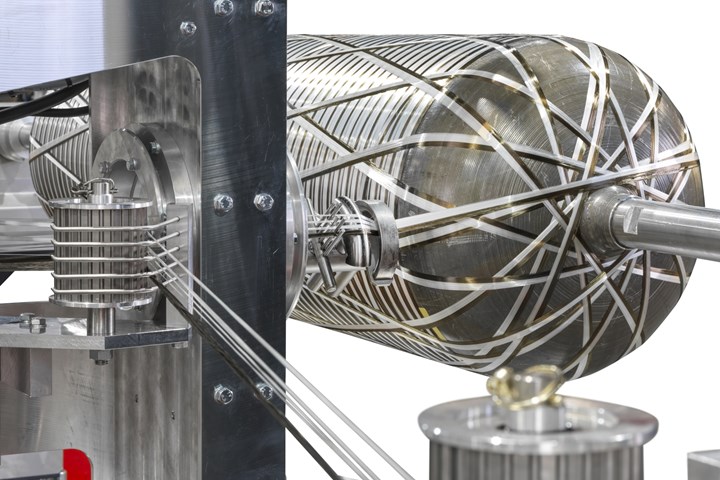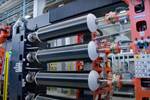Roth Composite Machinery introduces the FWA 1 Duplex filament winding machine
Dynamic, multi-spindle machine enables the winding process to occur on both sides of the spindle, reportedly halving production time.

Photo Credit: Roth Composites Machinery
Roth Composite Machinery (Steffenberg, Germany) has launched the FWA 1 Duplex, a filament winding machine for the large-scale production of pressure vessels, particularly for commercial vehicles and trucks. Compared to the company’s conventional, multi-spindle machines, FWA 1 Duplex enables the winding process to occur on both sides of a spindle, reportedly making the production process 10-15% faster.
The machine features a strong frame construction with an additional spindle drive on the opposite side for dynamic filament winding, while also being capable of maintaining control over double the typical fiber volume. It is available with three, four or five spindles as well as an additional carriage system, if wanted. The machine is suitable for production processes for wet/dry towpreg winding procedures using all common fiber reinforcements, but especially carbon and glass fiber. According to Roth Composite Machinery, the Duplex production line offers 15% space savings on the production floor, and is 10% cheaper compared to other machinery with the same output capacity.
Related Content
-
Industrializing additive manufacturing in the defense/aerospace sector
GA-ASI demonstrates a path forward for the use of additive technologies for composite tooling, flight-qualified parts.
-
Combining multifunctional thermoplastic composites, additive manufacturing for next-gen airframe structures
The DOMMINIO project combines AFP with 3D printed gyroid cores, embedded SHM sensors and smart materials for induction-driven disassembly of parts at end of life.
-
Composites end markets: New space (2025)
Composite materials — with their unmatched strength-to-weight ratio, durability in extreme environments and design versatility — are at the heart of innovations in satellites, propulsion systems and lunar exploration vehicles, propelling the space economy toward a $1.8 trillion future.



